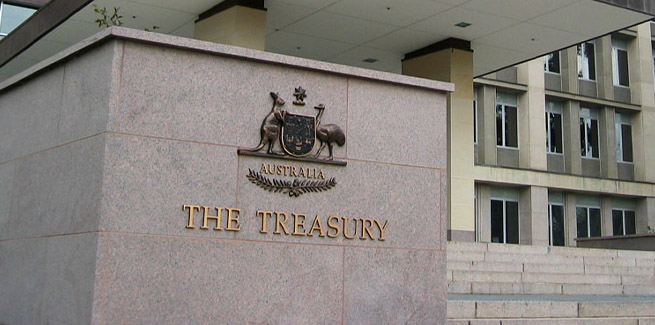The Morrison government has released Treasury’s mid-year economic and fiscal outlook (MYEFO) for the 2019-20 financial year, in which it has revised down its forecast for a budget surplus, from $7.1 billion to $5 billion.
Treasury’s forecast for revenue growth has also been revised down by approximately $3 billion in the 2019-20 financial year and by $32.6 billion in the forward estimates (next four years).
This, according to Treasury’s forecasts, would be underpinned by GDP growth of 2.25 per cent in the 2019-20 financial year, revised down from 2.75 per cent in the government’s budget.
Despite revisions to the downside, the government is pleased with MYEFO amid “sustained global and domestic economic headwinds”.
In a joint statement, Treasurer Josh Frydenberg and Finance Minister Mathias Cormann said the forecasts were strong when compared with those projected by comparable economies.
“The outlook for the Australian economy is positive,” the government stated.
“GDP growth in the first three quarters of 2019 has been stronger than it was in the second half of 2018, with MYEFO confirming that the economy is forecast to grow by 2.25 per cent in 2019-20.
“Growth is forecast to improve to 2.75 per cent in 2020-21, which is faster than any G7 nation and well above the OECD average of 1.6 per cent.”
Treasury’s forecasts also undermine the Reserve Bank of Australia’s objectives of full employment and stronger wages growth, with projections for the unemployment rate revised down from 5 per cent at the time of the budget release to 5.25 per cent.
The Wage Price Index has also been revised down from 2.75 per cent to 2.5 per cent.
Dwelling investment to continue sliding
Additionally, despite expecting the rebound in activity across the established housing market to contribute to growth, Treasury is expecting a continued decline in dwelling investment.
Treasury has forecasted a 9 per cent slide in dwelling investment over the 2019-20 financial year, followed by a 3.5 per cent decline in 2020-21.
“Despite the recent stabilisation in the established housing market, weakness in residential building approvals has persisted and the number of approvals in October 2019 was more than 40 per cent lower than its peak in late 2017,” Treasury noted in its MYEFO report.
“The pipeline of residential construction work yet to be done remains elevated, although this too has softened and the downward trend in building approvals means that a continued moderation in the future level of activity is likely.”
Treasury expects dwelling investment activity to recover towards the end of the forecast period, supported by “lower interest rates, continued population growth and improvements in the broader economy”.
[Related: NHFIC loans to total $900 million for community housing]
 ;
;
